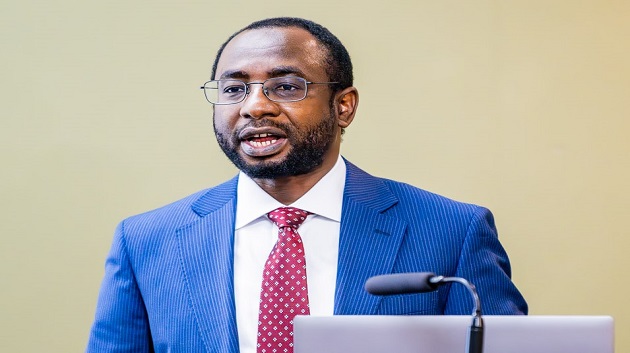E-Business
Cisco Leads Security Appliance Market 2013 With 16.6% Share
Cisco continues to lead the overall security appliance market with a 16.6% share in factory revenue for the first quarter as disclosed by International Data Corporation (IDC) Worldwide Quarterly Security Appliance Tracker.
Also, IDC found that security appliance market revenue rose in the first quarter of 2013 (1Q13) compared to Q1 2012, while unit shipments declined over the same period.
Worldwide factory revenue was up 3.4% year over year to $2.0 billion, as shipments decreased -6.8% to 472,306 units.
The shipment decline was due in large part to Cisco, which has transitioned to new appliances with higher price point causing revenue to remain more consistent compared to declining units. The year-over-year growth rate for factory revenue was the lowest since Q1 2010.
Geographically, Canada saw the highest year-over-year growth in the quarter (16.4%), followed by Japan (8.6%). Asia/Pacific (excluding Japan) continued to see steady growth (7.1%) and accounted for more than 16% of worldwide factory revenue.
Western Europe also built on a strong fourth quarter and saw factory revenue rise 3.9% versus 1Q12. Asia/Pacific (excluding Japan) was the only region to see a year-over-year increase in unit shipments in the quarter (2.8%). The United States recorded a -0.2% decline in factory revenue and a unit decrease of -10.2% compared to 1Q12.
“The government sector seemed to impact the results somewhat in the United States,” said John Grady, Research Manager, Security Products at IDC.
“However, all organizations continue to prioritize security within their overall IT budget. With advanced, targeted threats a growing concern, IDC expects continued high single-digit growth in the overall security appliance segment over the course of 2013.”
However, the report ranked Cisco as leading the overall security appliance market with a 16.6% share in factory revenue for the first quarter, but this was down from 17.8% in the prior year period.
Check Point held the number 2 spot with a 12.5% share for the quarter as revenue increased 5.7% compared to the first quarter of 2012.
Fortinet saw the largest revenue growth among the top five vendors at 16.6%. The combined shares of the top 5 global vendors represented 49% of the market in Q1 2013.
Blue Coat, Palo Alto Networks, and Sophos were some of the vendors outside the top 5 seeing strong growth in the quarter.
Functional Market Results show that at the functional market level, the Unified Threat Management (UTM) segment saw the largest year-over-year revenue growth at 36.4% and accounted for 37.1% of security appliance revenue in 1Q13, as multi-function appliances continued to drive growth in the overall market.
The Firewall/VPN market declined 21.2% year over year, but still represented 20.9% of security appliance revenue in the quarter.
The Content Security segment rose by 6.8% compared to the prior year and accounted for 20.3% of the market. IDP saw modest growth of 0.3% compared to the prior year period.
“While businesses continue to explore the opportunities for migrating to a private cloud network as a new technology paradigm, unified security prospects will continue to expand rapidly into other small and medium-size businesses where demand is greater than ever,” said Ebenezer Obeng-Nyarkoh, senior research analyst.
E-Business
NITDA Ignites a Revolution for Gender Inclusion in Nigeria’s AI and Digital Economy

In a powerful stride towards an inclusive digital future, the National Information Technology Development Agency (NITDA) is spearheading a transformative drive to empower Nigerian women in the Artificial Intelligence (AI) and digital economy.

This commitment was resoundingly reiterated by NITDA’s Director General, Kashifu Inuwa CCIE, at the “Innovate Her 25” conference, the 10th National Conference and 11th Annual Meeting of Nigerian Women in Information Technology.
Speaking at the event themed “Women in AI: Unlocking Resilience, Fostering Innovation and Leadership,” Inuwa, represented by Dr. Aristotle Onumo, Director of Stakeholder Management and Partnerships, emphasised that true innovation blossoms not in isolation, but through synergistic partnerships and collective endeavor – principles deeply embedded in NITDA’s operational ethos.
Highlighting Nigeria’s Artificial Intelligence (AI) Strategy, Inuwa added that inclusivity is embedded as a core objective: “Our strategic roadmap mandates that at least 40% of our programmes directly benefit women and underserved groups. We have also developed a Gender Inclusion Strategy to guide interventions in areas such as training and infrastructure,” he explained.
Further underscoring Nigeria’s leadership in the digital space, Inuwa excitingly announced that in September 2025, NITDA will proudly host a Leadership Summit on AI. This landmark event will convene stakeholders from across the African continent, fostering a collaborative environment to forge a unified AI vision for Africa.
In alignment with the conference’s focus on empowering women in technology, the DG detailed NITDA’s diverse capacity-building initiatives spanning AI, cloud computing, and cybersecurity. “We work with partners such as the Renew Hope Initiative to train thousands of women across Nigeria’s six geopolitical zones,” he revealed, highlighting the agency’s broad reach.
NITDA stands ready to collaborate with organisations like the Nigerian Women in Information Technology (NIWIT), actively encouraging proposals for bespoke programmes that cater to specific community needs. “We focus on targeted training with measurable outcomes, rather than generic approaches,” Inuwa affirmed, emphasising a results-oriented methodology.
He further spotlighted NITDA’s “Digital Literacy for All Initiative,” which seeks to equip 70% of Nigerians with digital literacy by 2027. Through strategic partnerships with the NYSC and the integration of digital literacy into national school curricula, the agency plans to train over 30 million Nigerians — with a dedicated focus on underserved communities and public servants.
Addressing critical concerns surrounding ethical AI, Inuwa emphasised the importance of developing indigenous datasets and large language models reflective of Nigeria’s unique realities: “We are working closely with stakeholders to build local datasets that safeguard Nigerians’ digital rights and ensure ethical AI use,” he assured.
NITDA is also championing mentorship for women in technology through impactful initiatives such as Women Innovate. The agency warmly welcomes collaboration with NIWIT to design structured mentorship programmes and is open to formalising such partnerships through Memoranda of Understanding (MoUs).
“NITDA is committed to fostering inclusive economic growth through innovation. Partnership and collaboration remain the way forward,” Inuwa declared.
The session concluded with a resounding call to action, urging women-focused organisations to leverage NITDA’s open-door policy and unite in advancing digital inclusion across Nigeria. The future of Nigeria’s digital economy is inclusive, and women are at its forefront.
E-Business
Amazon CEO Says AI will Reduce Number of Workers Needed

Amazon’s management on Wednesday said that it expects that artificial intelligence software will reduce the number of office workers at the world’s largest online retailer.

Andy Jassy, chief executive, Amazon
“We will need fewer people doing some of the jobs that are being done today and more people doing other types of jobs,” Andy Jassy, chief executive, Amazon wrote in an email to employees.
He said it was difficult to predict how the overall workforce will evolve, but in the next few years, it is expected that AI efficiency gains will lead to a reduction in the number of office workers.
According to earlier reports, Amazon employed around 1.5 million people worldwide, with approximately 350,000 office employees in various roles.
The Wall Street Journal reported that the company does not anticipate further large-scale layoffs, as seen in 2022 and 2023, in the near future.
Instead, it expects that vacant positions will not be refilled.
However, layoffs are not ruled out, according to sources familiar with the matter.
“Amazon is focusing on so-called AI agents, software capable of independently performing tasks. These agents could, for example, summarise information from the web and data sources, write software, translate languages and automate many time-consuming tasks,” Mr Jassy explained.
“Agents will be teammates that we can call on at various stages of our work,” he added, urging employees to experiment with AI whenever possible.
The impact of AI on the job market has been a concern for many years.
Recently, Spotify, the leader in music streaming, announced that teams requesting additional staff would first need to prove that AI could not perform the tasks.
The creators of the language-learning app Duolingo plan to gradually replace external workers with AI.
E-Business
BPP Partners NDPC to Strengthen Data Protection

Dr Adebowale Adedokun, director-general, Bureau of Public Procurement (BPP), has reaffirmed the bureau’s commitment to data protection in Nigeria.

He disclosed this in a statement at the weekend by Zira Nagga, head of Public Relations, BPP, following a courtesy visit by a delegation from the National Data Protection Commission (NDPC).
Adedokun stressed that data protection is vital to Nigeria’s economy and development, particularly in areas such as demography, health, education, and other key sectors.
He emphasised that no country should leave its data unprotected, as it plays a crucial role in future planning and national development.
“Data governs the world. It is essential to technological progress and must be protected for a country or business to be taken seriously,” he said.
Adedokun described the visit, aimed at fostering partnership on data policy implementation and protection, as timely and aligned with national goals.
He said the BPP would collaborate closely with the NDPC to boost data development, capacity building, and enhance the procurement system.
“The BPP will support compliance as part of the ‘Nigeria First’ Policy, although it is not a core procurement eligibility requirement,” he explained.
He suggested a hybrid training model to help build strong capacity in data protection, privacy awareness, and policy understanding.
According to him, a dynamic training approach will reduce logistics costs and improve public confidence in data safety and privacy.
Dr Vincent Olatunji, CEO, and national commissioner, NDPC, praised Adedokun and the BPP for supporting data protection initiatives.
He said the partnership supports President Bola Tinubu’s vision and will strengthen data privacy across Ministries, Departments, and Agencies (MDAs).
“The collaboration will create awareness and train BPP staff to ensure a firm grasp of data protection principles and policies,” he stated.
Olatunji said the NDPC would establish a working group to finalise a Memorandum of Understanding beneficial to both institutions.
He added that President Tinubu signed the NDPC into law on 12 June 2023 to uphold citizens’ rights and protect national and business data.
Olatunji also noted that strict legal measures were in place to enforce data protection and ensure full compliance nationwide.
Both agencies agreed to form a team to sign the MoU and focus on capacity building and data management in procurement and beyond.

 General News2 days ago
General News2 days agoNASRDA, Galaxy Space Firm Sign MoU on Satellite Connectivity

 Telecom2 days ago
Telecom2 days agoOver 1m Nigerians Reached through MTN Staff’s Digital and Community Outreach

 Telecom2 days ago
Telecom2 days agoMafab Gets 0724 Number Series, Launches Mcom 5G Brand

 News2 days ago
News2 days agoDBN Awards N13m in Grants to Tech Startups

 Telecom2 days ago
Telecom2 days agoNCC to Name, Shame Telecom Infrastructure Vandals

 News2 days ago
News2 days agoFCCPC Shuts France, Belgium, and Italy Visa Centres in Abuja Over Alleged Consumer Rights Violations

 Telecom2 days ago
Telecom2 days agoWSIS Review: Nigerian ICT Leaders Urged to Shape Global Digital Future

 E-Financial2 days ago
E-Financial2 days agoBank Customers Petition CBN over Illegal Deductions, Demand Action




























